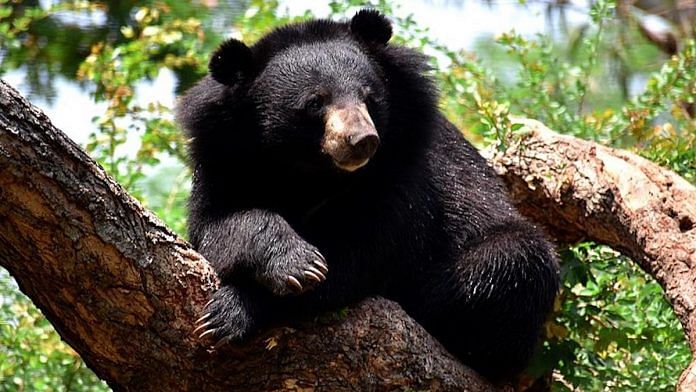When we think of climate change, we tend to think about the impact it will have on human beings. We often forget that it affects animals and plants too.
A few days ago, more than 177 sheltered buffaloes and other cattle drowned in a dairy farm when the Pallecheruvu lake breached in Hyderabad due to heavy rains. This news remained at the bottom of the stack as the floods devastated the lives of thousands of people, wreaking havoc in the city. Up north, thousands of pashmina goats have reportedly died in Ladakh in the past decade due to extreme winter and scarcity of fodder, triggered by climate change. The once-in-a-century Kerala floods in 2018 led to approximately 10,000 livestock casualties.
Climate change is affecting both India’s wildlife and domestic animals. A recent report showed that abnormal snowfall due to climate change is causing behavioural changes in Himalayan bears – cutting short their hibernation period considerably. This is making the bears more aggressive and causing increased incidences of human-wildlife conflict.
These climate change-induced incidents will only increase. But India is still not connecting the dots.
Also read: Not just the Amazon rain forest, other one-of-a-kind ecosystems are burning down too
India’s melting point
We have seen a spate of natural calamities recently.
When climate-change fuelled super cyclone Amphan hit India’s east coast earlier this year, a vast portion of the vulnerable Sunderbans was impacted. Several birds and animals, including tigers, were killed during the cyclone and thousands of trees were uprooted.
The Assam floods of 2020 brought the focus back to the plight of animals in the Kaziranga National Park. The annual floods in the region, which used to earlier occur on a generational scale, are now recurring with greater intensity almost every single year leaving no time for the regeneration of damaged habitats. The number of animals dying each year due to the floods is considerable with more than 100 animals reported dead in the recent floods, as per official figures.
While the Amazon, Australia and California fires have caught our attention, we haven’t paid attention to the fact that wildfires are also increasing considerably across the forests of India. The raging wildfires in recent years, notably in Bandipur and in Uttarakhand, have taken a heavy toll on wildlife. According to the Forest Fire Survey of India, 29,547 fires were detected in 2019.
In the seas, rising temperatures are proving to be a bane for the corals of Lakshadweep and other coastal regions with vast stretches suffering from coral bleaching. These marine heatwaves are often the result of climate change and is one of the leading causes for the destruction of coral habitats.
Climate change is affecting our birds too. The Sarus crane, which nests at the start of the rainy season, is being affected by altered cropping and rainfall patterns leading to unseasonal nesting and subsequent disruption of their life cycle.
As animals struggle with the deterioration of natural habitats and loss of water sources, many species will perish because of their inability to adapt to new climatic conditions. And the animals that can migrate will be forced to look for favourable habitats – elephants in the subcontinent are expected to move towards higher elevations in the Himalayas due to habitat loss. Climate change makes refugees out of both human beings and animals.
In our neighbourhood, one-horned rhinos in Nepal are bearing the weight of erratic weather. During floods, many rhinos drown or are washed downhill into India. Ominously, climatic variations are also creating conditions favourable for invasive plant species to thrive, driving the rhinos out of their habitat in search of food and forcing them to interact with humans, causing conflict.
Also read: Capitalism caused the current climate crisis, it must also be the solution
Climate justice for all
As extreme climate events explode across the globe and render entire communities destitute, an equally unfortunate fallout has been the loss of wildlife, domestic animals and flora. With a 68 per cent fall in the animal population in the past 50 years across the globe, the human-induced climate crisis is likely to piggyback on this perfect storm and have a far-reaching impact on wildlife and domesticated animals.
The demand for climate justice has grown over the years as the idea of sharing the burdens of climate change fairly and equitably gains ground. True justice will encompass the rights of all living beings with whom we share the earth – it will mean building a more inclusive model of climate justice. For the elephants in Jharkhand, the corals in Lakshadweep, the owls in cities and the goats in farms.
Perhaps, we should learn from indigenous people because they best integrate principles of climate justice to include people and nature together rather than putting people first. As Amrita Devi Bishnoi said before sacrificing her life to save trees in Rajasthan in the 18th century: “Sar santey rukh rahe to bhi sasto jan.” If sacrificing your head saves a tree, it’s worth it.
Kunal Sharma is a faculty at Azim Premji University, Bengaluru and Abhijit Dutta works in the field of Conservation and Climate Crisis. Views are personal.




🙂 Keep up the good work, I’m sure it must be both frustrating & difficult to try and reason with a majority of 21st century humans who are clearly on a power trip. “Peter, with great power comes great responsibility.” died with Uncle Ben & Spidey was busy spinning a web of romance, guilt & ego all over his friendly neighbourhood. Let me know, how may I help? Oh, btw I’m broke.